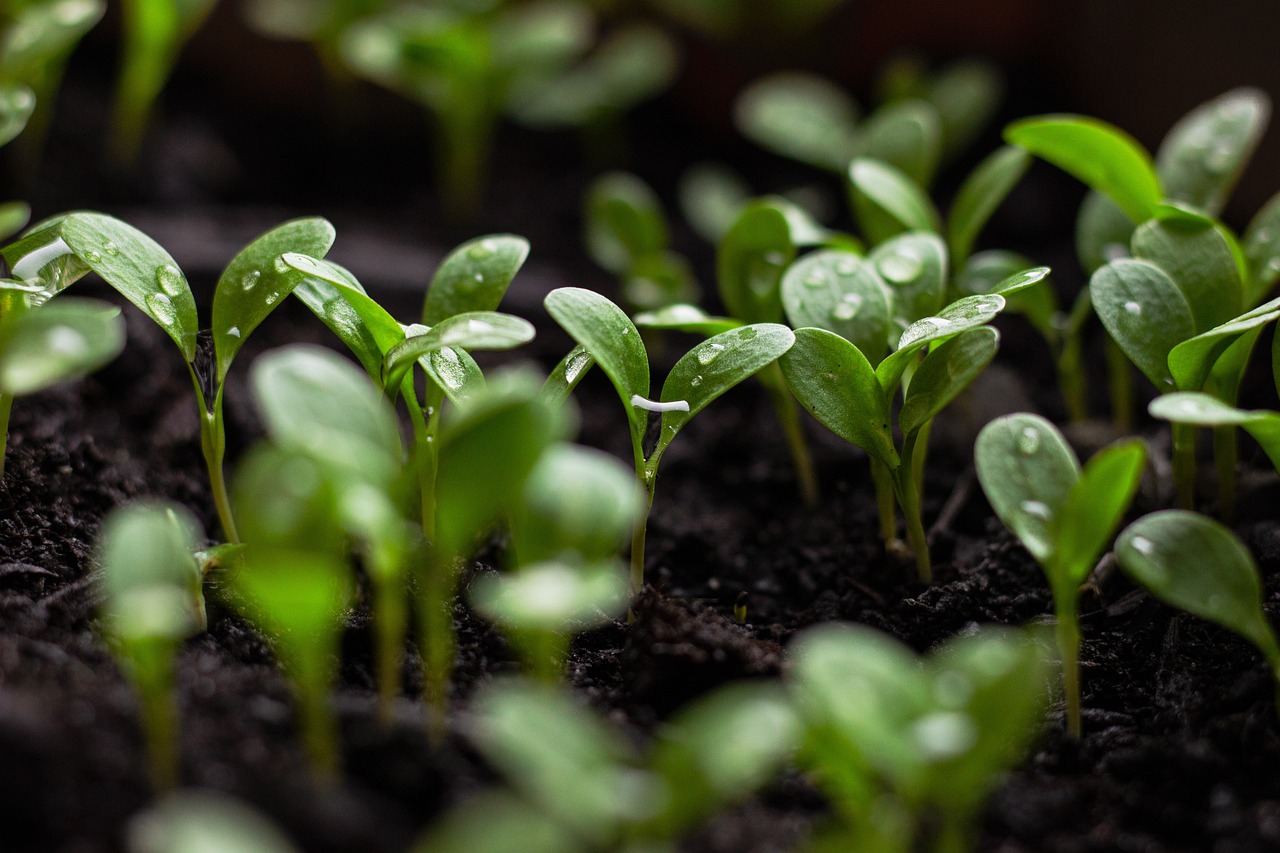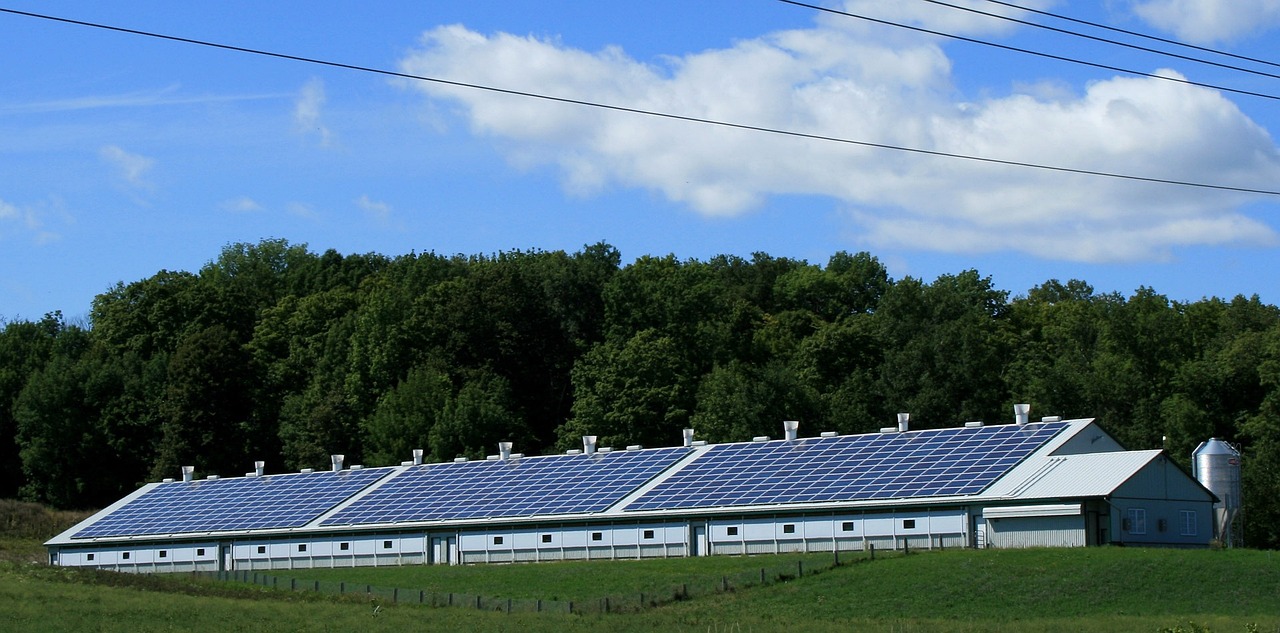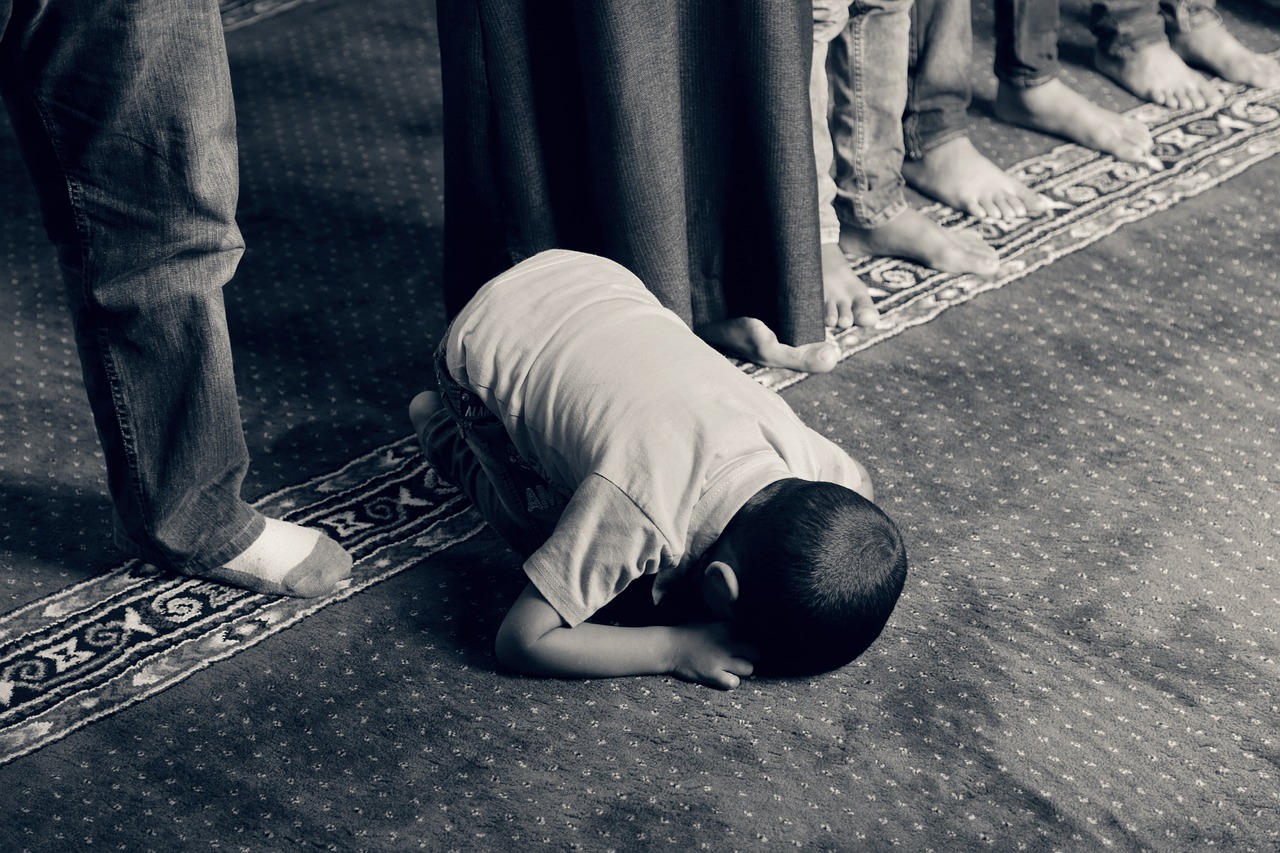How to Encourage Your Kids to Live Sustainably?
In today’s world, where climate change and environmental issues are at the forefront of global discussions, teaching our children about sustainability is more crucial than ever. But how do we, as parents, guide our kids in adopting eco-friendly habits? The journey begins with understanding the concept of sustainability and its significance for their future and the planet. By fostering a sense of responsibility and connection to nature, we can inspire them to make a difference. So, let’s dive into some effective strategies that will not only educate but also empower our little ones to live sustainably!
To encourage kids to live sustainably, it's essential to explain what sustainability means and why it matters for their future and the planet. Sustainability is all about meeting our own needs without compromising the ability of future generations to meet theirs. Imagine a world where clean air, fresh water, and thriving wildlife are just as abundant for our grandchildren as they are for us. By instilling this vision in our children, we help them understand that their actions today can have a lasting impact on tomorrow.
Simple changes at home can have a significant impact. Teaching kids to recycle, compost, and conserve water can instill lifelong sustainable habits. For instance, you could set up a recycling station in your kitchen, making it easy for your kids to sort plastics, paper, and metals. Explain to them how recycling reduces waste and conserves resources. Additionally, involve them in composting food scraps; it’s like giving back to the earth! Not only does it reduce landfill waste, but it also creates nutrient-rich soil for gardening. These small actions can create a ripple effect, making sustainability a natural part of their daily lives.
Spending time outdoors helps children appreciate nature. Activities like hiking, gardening, or visiting parks can foster a connection to the environment. When kids feel a bond with nature, they are more likely to want to protect it. Consider organizing family outings to local parks or nature reserves. Let them explore, observe wildlife, and understand the importance of biodiversity. You could even start a small garden at home where they can learn about where food comes from. This hands-on experience is invaluable and can spark a lifelong passion for the environment.
Utilizing books, documentaries, and interactive games can make learning about sustainability fun and engaging for kids, enhancing their understanding and interest. There are countless resources available that present environmental issues in a kid-friendly manner. For example, consider reading books that tell stories about nature conservation or watching documentaries that highlight the beauty of our planet. Interactive games can also teach them about ecosystems and the importance of reducing waste. The key is to make learning enjoyable, so they are eager to explore more!
Children often mimic their parents' behaviors. If they see you practicing sustainable habits, they’re more likely to adopt those same practices. Whether it’s using reusable bags, reducing plastic usage, or conserving energy, your actions speak volumes. Share your thoughts with them; explain why you choose to live sustainably. When they understand the reasons behind your actions, it reinforces their learning. Remember, you are their role model, and your commitment to sustainability can inspire them to follow suit!
Encouraging walking, biking, or using public transportation can help kids understand the importance of reducing carbon footprints and making eco-friendly choices. Instead of jumping in the car for every outing, why not walk or bike to nearby destinations? This not only reduces emissions but also promotes a healthy lifestyle. You could even turn it into a fun family adventure! Explain to them how transportation choices impact the environment, and soon they’ll be more conscious of their travel decisions.
Organizing fun challenges, such as a week of zero waste or energy conservation, can motivate kids to actively participate in sustainable practices. Make it a friendly competition! For example, challenge them to see who can use the least amount of water in a week or who can come up with the most creative way to reuse items around the house. This not only makes sustainability exciting but also encourages teamwork and creativity. Celebrate their efforts with small rewards or recognition to keep the momentum going!
Participation in local environmental projects, such as clean-up drives or tree planting, can empower children and foster a sense of responsibility towards their community. Look for opportunities in your area where families can volunteer together. Not only will they learn about the importance of caring for the environment, but they will also build a sense of community and teamwork. These experiences can be transformative, showing them that their actions, no matter how small, contribute to a larger cause.
Recognizing and celebrating sustainable efforts, no matter how small, can encourage kids to continue their eco-friendly practices and inspire others to join. Create a “sustainability wall” at home where you can display their achievements, whether it’s a drawing of their favorite nature spot or a photo from a community clean-up. Acknowledging their efforts reinforces positive behavior and shows them that their contributions matter. Remember, every little bit counts in the journey towards a more sustainable future!
Q: How can I make sustainability fun for my kids?
A: Incorporate games, challenges, and hands-on activities like gardening or community clean-ups to make learning about sustainability enjoyable.
Q: What age should I start teaching my kids about sustainability?
A: You can start as early as preschool age! Simple concepts like recycling and conserving water can be introduced to young children.
Q: How can I encourage my kids to reduce their screen time and spend more time outdoors?
A: Plan outdoor family activities, such as hiking, biking, or visiting parks, to make nature exploration appealing and engaging.

Understanding Sustainability
To truly encourage kids to live sustainably, we first need to break down what sustainability really means. Imagine a world where our actions today don’t just benefit us, but also ensure that future generations can enjoy the same resources and beauty of nature that we do now. It’s like planting a tree; we may not sit in its shade today, but we’re ensuring that others will in the future. Sustainability is all about finding a balance—between our needs and the health of our planet.
So, why does sustainability matter? Well, think about it: our planet is like a giant ecosystem that supports all life. When we use resources without thinking about the consequences, we risk depleting these resources and harming the environment. For instance, if we keep cutting down forests without replanting, we not only lose trees but also the wildlife that depends on them. Teaching kids about this interconnectedness can help them understand their role in protecting our Earth.
Here are a few key points that can help explain sustainability to children:
- Resource Management: Everything we use comes from the Earth. Whether it’s water, wood, or food, understanding where these resources come from is crucial.
- Environmental Impact: Every action has a reaction. When we pollute the air or water, it affects not just us but all living beings.
- Future Generations: It’s essential to think about how our actions today will impact those who come after us. We owe it to them to leave a healthy planet.
By explaining these concepts in a relatable way, you can help your kids grasp the significance of sustainability. Use stories or examples from their daily lives, like how turning off the lights when leaving a room saves energy, or how recycling can help reduce waste. This not only makes the topic more engaging but also shows them that their actions matter.
Incorporating sustainability into their everyday lives can be as simple as discussing the importance of reducing, reusing, and recycling. When they understand that their choices—like bringing a reusable water bottle or using cloth bags—make a difference, they start to feel empowered. It’s like giving them a superpower to protect the planet, and who wouldn’t want that?
Ultimately, understanding sustainability is about instilling a sense of responsibility and connection to the Earth. When kids grasp the importance of taking care of our planet, they become more likely to adopt sustainable practices as they grow. It’s a journey that starts with knowledge, and as parents and educators, we have the opportunity to guide them along the way.

Incorporating Eco-Friendly Practices at Home
When it comes to teaching our kids about sustainability, the home is the best place to start. It's like a mini-laboratory where they can learn through experience. Imagine your home as a small ecosystem where every action has a ripple effect on the environment. By incorporating eco-friendly practices into your daily routine, you can instill lifelong habits in your children that will benefit both them and the planet. So, how do we turn our homes into eco-friendly havens?
First off, let’s talk about recycling. It’s not just about throwing paper in one bin and plastic in another; it’s about making it a fun and engaging activity for kids. Set up a recycling station at home. You can use colorful bins to make it visually appealing. Explain to your kids what materials can be recycled and why it’s important. For instance, did you know recycling one aluminum can saves enough energy to run a TV for three hours? That’s a fun fact that can spark their interest!
Next, consider composting. This is where the magic happens! Composting is like giving a second life to food scraps. You can start a small compost bin in your kitchen or even a compost pile in the backyard. Involve your kids by letting them add vegetable peels, eggshells, and other compostable materials. They’ll love seeing how waste can turn into nutrient-rich soil for your garden. It’s a beautiful cycle of life that they can witness firsthand.
Water conservation is another crucial practice. Teach your kids to be mindful of their water use. Simple actions like turning off the tap while brushing their teeth or taking shorter showers can make a big difference. You could even set a family challenge to see who can save the most water in a week! To make it more fun, track your water usage on a chart, and celebrate your collective efforts at the end of the month.
Moreover, energy conservation is vital. Encourage your kids to turn off lights when they leave a room and unplug devices that aren't in use. You could even have a family discussion about the importance of using energy-efficient appliances and how they can help reduce the family’s carbon footprint. It’s amazing how small changes can lead to significant impacts!
Lastly, let’s not forget about reducing waste. The mantra “reduce, reuse, recycle” is a fantastic starting point. Challenge your kids to think creatively about how they can reuse items around the house. For example, old jars can become storage containers for crafts or snacks. You could even hold a family “upcycling” night, where everyone brings in items to transform into something new and useful. It’s a great way to foster creativity while being kind to the planet.
In summary, incorporating eco-friendly practices at home isn’t just about making changes; it’s about creating a culture of sustainability. By actively engaging your children in these practices, you’re not only teaching them valuable lessons but also empowering them to become responsible stewards of the environment. So, roll up your sleeves and dive into this exciting journey of sustainability together!
- What age should I start teaching my kids about sustainability? It's never too early! You can start introducing simple concepts as soon as they can understand basic ideas.
- Are there any fun activities to engage kids in eco-friendly practices? Absolutely! Gardening, nature walks, and DIY recycling projects can be both fun and educational.
- How can I encourage my kids to stay motivated in their eco-friendly habits? Celebrate their achievements, no matter how small, and make it a family effort to create a supportive environment.

Engaging in Nature Activities
Engaging your kids in nature activities is one of the most effective ways to instill a love for the environment. Imagine how magical it is for a child to discover the wonders of the great outdoors! When kids spend time in nature, they're not just having fun; they're also learning invaluable lessons about ecosystems, wildlife, and the importance of preserving our planet. So, how can you make nature a part of your family's routine? Let's explore some exciting activities that can foster a deep connection with the environment.
First off, consider hiking. It’s not just a walk in the park; it’s a mini-adventure! Whether it's a local trail or a national park, hiking offers a chance to explore different terrains, observe wildlife, and appreciate the beauty of nature. Plus, it’s a great way to get some exercise! You can turn it into a treasure hunt by encouraging your kids to spot various plants, animals, or even different types of rocks along the way. This makes the hike educational and fun, providing an opportunity to discuss the importance of biodiversity.
Another fantastic way to engage with nature is through gardening. Planting a garden, even if it’s just a small one in your backyard or on your balcony, can be a rewarding experience. Kids can learn about where their food comes from, the process of photosynthesis, and the importance of nurturing living things. You could start with easy-to-grow plants like tomatoes, herbs, or flowers. Watching a seed grow into a plant can be a magical experience, and it teaches patience and responsibility. Plus, when they finally harvest their produce, they’ll feel a sense of accomplishment that’s hard to beat!
Don’t forget about the joy of visiting local parks or nature reserves. These outings can be both educational and fun. Many parks offer programs for children that include guided nature walks, bird watching, or even educational workshops about local wildlife. This not only provides hands-on learning experiences but also instills a sense of community and appreciation for local ecosystems. Encourage your kids to ask questions during these visits—curiosity is a powerful tool for learning!
Additionally, consider organizing family camping trips. Camping is a great way to immerse your family in nature. It’s a chance to disconnect from technology and reconnect with each other and the environment. Sitting around a campfire, stargazing, or simply listening to the sounds of the night can create lasting memories. Teach your kids about the Leave No Trace principles, emphasizing how to enjoy nature responsibly without harming it.
To make it even more engaging, you can introduce a nature journal for your kids. Encourage them to document their observations, sketches, or even thoughts during your nature outings. This not only enhances their observational skills but also allows for creative expression. They can look back on their journals and see how their understanding of nature has evolved over time, creating a personal connection to their experiences.
In summary, engaging in nature activities is not just about spending time outside; it’s about creating lasting connections and memories that will encourage your kids to respect and care for the environment. By incorporating these activities into your family routine, you're not only teaching them about sustainability but also giving them the tools to become responsible stewards of our planet.
- What are some easy nature activities for kids? Simple activities include hiking, gardening, visiting parks, and nature scavenger hunts.
- How can I make gardening fun for my kids? Let them choose what to plant, and involve them in all stages of the gardening process, from planting to harvesting.
- Why is spending time in nature important for children? It helps them develop a connection to the environment, promotes physical activity, and fosters a sense of responsibility towards nature.

Educational Resources and Tools
In today's digital age, there are countless educational resources available that can make learning about sustainability both fun and engaging for kids. From interactive websites to captivating documentaries, the options are endless. Imagine your child diving into a world where they can explore the wonders of nature, understand the impact of pollution, and learn about renewable energy sources—all from the comfort of your living room! This is the magic of modern educational tools.
Books are a fantastic starting point. There are numerous children's books that delve into environmental themes, teaching kids about the importance of taking care of our planet. For instance, titles like The Lorax by Dr. Seuss and What a Wonderful World by George David Weiss can spark conversations about conservation and the beauty of nature. By reading these stories together, you can create a bonding experience while instilling vital lessons about sustainability.
Moreover, documentaries can be incredibly impactful. Films like Our Planet and Before the Flood present stunning visuals and compelling narratives that can captivate even the youngest viewers. These documentaries not only entertain but also educate, highlighting the urgency of environmental issues and the role that every individual can play in making a difference.
Additionally, interactive games and apps are excellent tools for engaging children in sustainability practices. There are various platforms where kids can simulate running their own eco-friendly farms or manage resources in a virtual world. These games teach them about the delicate balance of ecosystems and the consequences of environmental neglect. For example, games like Eco allow players to create a civilization while being mindful of their ecological footprint.
To further enhance learning, consider creating a dedicated space at home where kids can explore these resources. Set up a small library nook filled with books on nature and sustainability, equipped with a tablet or computer for watching educational videos. This not only makes learning accessible but also encourages children to take initiative in their education.
Lastly, don't underestimate the power of community resources. Local libraries often host workshops and reading programs focused on environmental education. Participating in these activities can provide children with hands-on experiences and a chance to connect with peers who share similar interests. By leveraging both digital and community resources, you can create a well-rounded educational experience that inspires your children to embrace sustainability wholeheartedly.
- What age is appropriate to start teaching kids about sustainability? It's never too early! Even toddlers can grasp basic concepts like recycling and caring for plants.
- How can I make learning about sustainability fun? Incorporate games, crafts, and outdoor activities that align with sustainable practices.
- Are there specific resources for teenagers? Yes, many documentaries and books are targeted at older children, discussing more complex issues like climate change and renewable energy.

Leading by Example
When it comes to teaching our kids about sustainability, one of the most powerful tools in our arsenal is the simple act of . Children are like sponges; they absorb everything around them, especially the behaviors and attitudes of their parents and caregivers. If they see you actively engaging in eco-friendly practices, they are more likely to mimic those actions and develop a genuine interest in sustainability. Imagine your child watching you sort the recyclables, turning off lights when leaving a room, or opting for reusable bags at the grocery store. Each of these actions sends a clear message: sustainability is not just a buzzword; it’s a way of life.
But how can we effectively demonstrate these values? Start by incorporating simple, everyday habits into your routine. For instance, you might consider:
- Reducing single-use plastics: Carry a reusable water bottle and encourage your kids to do the same.
- Composting: Set up a small compost bin in your kitchen and involve your children in the process, explaining how it helps reduce waste.
- Saving energy: Make it a family habit to turn off electronics and lights when not in use, and discuss the impact of energy conservation.
Moreover, sharing your experiences can be incredibly impactful. Talk about why you made the switch to a more sustainable lifestyle—was it a documentary that moved you? A book that opened your eyes? By sharing your journey, you not only make sustainability relatable but also inspire your children to explore their own paths. You can even create a family project, like starting a small garden. This hands-on experience can be a fun way to teach them about where food comes from and the importance of biodiversity.
Remember, it’s not just about the actions themselves, but also about the conversations you have around them. Ask your kids questions like, “What do you think happens to our trash?” or “How do you feel when we use less plastic?” Engaging them in dialogue encourages critical thinking and reinforces the importance of their role in protecting the planet.
Lastly, don’t forget to celebrate your family’s sustainable efforts, no matter how small. Recognizing achievements, whether it’s reducing waste or planting a tree, can help your kids feel proud of their contributions. This sense of accomplishment can motivate them to continue making eco-friendly choices. Remember, leading by example is about creating a culture of sustainability in your home, and with every small step, you’re paving the way for a brighter, greener future for your children.
Q: How can I start leading by example in sustainability?
A: Begin with small, manageable changes in your daily routine, such as using reusable bags, conserving water, and recycling. Involve your kids in these activities to inspire them.
Q: What if my child is resistant to changing their habits?
A: It's important to be patient. Engage them in conversations about the environment and make sustainability fun through games and challenges.
Q: How can I make learning about sustainability engaging for my kids?
A: Use interactive resources like documentaries, books, and hands-on projects, such as gardening or DIY recycling crafts, to make the learning process enjoyable.
Q: Is it too late to teach my kids about sustainability?
A: Absolutely not! It’s never too late. Every small lesson counts and can have a lasting impact.

Promoting Sustainable Transportation
When it comes to encouraging kids to live sustainably, one of the most impactful areas to focus on is transportation. The way we move around has a significant effect on our planet, and teaching children about sustainable transportation can help them understand their role in protecting the environment. Imagine if every family made a conscious effort to reduce their carbon footprint by changing how they travel! That’s a big deal, right?
Start by introducing your kids to the concept of carbon footprints. Explain how different modes of transportation contribute to greenhouse gas emissions. For instance, driving a car often releases a significant amount of carbon dioxide into the atmosphere, while walking, biking, or using public transportation can drastically reduce this impact. You could even create a fun chart together to visualize how much less pollution is produced by each method of travel. This visual representation can make the concept more relatable and easier to grasp.
One effective way to promote sustainable transportation is by encouraging your children to walk or bike when possible. Not only does this reduce emissions, but it also promotes a healthy lifestyle! You can make it a family event—imagine riding bikes to the park or walking to the local store together. This not only builds memories but also instills a sense of responsibility in your children. They’ll start to associate fun experiences with eco-friendly choices, making them more likely to continue these habits as they grow.
Another option is utilizing public transportation. Teach your kids how to read transit maps and schedules, and plan a family outing using buses or trains. This can be a thrilling adventure for them! You can turn it into a game, where they have to navigate the route or find the right stops. This hands-on experience not only educates them about sustainable options but also gives them a sense of independence and confidence.
Incorporating sustainable transportation into your daily routine can also serve as a teaching moment. For instance, when you need to run errands, consider carpooling with friends or neighbors. Explain to your kids how sharing rides can reduce the number of cars on the road, which in turn helps the environment. You could even challenge them to come up with creative solutions for reducing car use, like organizing a neighborhood walking school bus where kids walk together to school under adult supervision.
To make this even more engaging, you could create a Sustainable Transportation Challenge. Set a goal for a week where everyone in the family commits to using sustainable transportation methods. Track your progress and celebrate your successes at the end of the week. Not only will this make the concept of sustainability tangible, but it will also foster teamwork and accountability among family members.
In conclusion, promoting sustainable transportation is not just about reducing emissions; it's about creating a culture of environmental awareness and responsibility. By involving your kids in fun activities, providing hands-on experiences, and leading by example, you can help them develop a lifelong commitment to sustainability. Remember, every small step counts, and the habits they form now can lead to a healthier planet for future generations.
- What is sustainable transportation? Sustainable transportation refers to modes of transport that have a low impact on the environment, such as walking, biking, carpooling, and using public transit.
- How can I encourage my kids to use public transportation? Start by planning a fun outing using public transport. Teach them how to read maps and schedules, making it an engaging learning experience.
- What are some fun activities to promote biking or walking? Organize family bike rides, walking school buses, or neighborhood scavenger hunts that require walking or biking to complete.
- How can I track our family's sustainable transportation efforts? Create a chart to log miles walked, biked, or taken via public transport. Celebrate milestones as a family to keep motivation high!

Creating a Sustainability Challenge
One of the most exciting ways to instill a sense of environmental responsibility in your kids is by . Think of it as a fun game that not only entertains but also educates. Kids love a good challenge, and by framing sustainable practices in this way, you can motivate them to engage actively in eco-friendly behaviors. Imagine turning your home into a mini-competition where everyone is a winner when it comes to saving the planet!
To kick things off, you might want to organize a week-long challenge that focuses on specific sustainable actions. For example, you could set a goal for your family to achieve zero waste for a week. This means reducing, reusing, and recycling as much as possible. Kids can track their progress on a colorful chart, making it visually appealing and fun. You could even create a simple
| Day | Waste Produced | Recycled Items | Reusable Items |
|---|---|---|---|
| Day 1 | 2 bags | 5 | 3 |
| Day 2 | 1 bag | 7 | 4 |
| Day 3 | 1 bag | 6 | 5 |
| Day 4 | 0 bags | 8 | 6 |
| Day 5 | 1 bag | 7 | 4 |
| Day 6 | 0 bags | 10 | 5 |
| Day 7 | 1 bag | 9 | 7 |
As the days progress, kids will start to see how their small actions can add up to make a big difference. You can enhance the challenge by introducing daily themes, such as:
- Meatless Monday: Encourage your family to go vegetarian for the day.
- Trash-Free Tuesday: Aim to produce no trash throughout the day.
- Water-Wise Wednesday: Focus on conserving water, like shorter showers.
- Thrifty Thursday: Explore thrift shops for second-hand items.
- Fun Friday: Create something new from old materials.
Involving kids in the planning process can also make them feel more invested in the challenge. Ask them to brainstorm ideas and pick activities they find exciting. Perhaps they want to create homemade cleaning products or start a small compost bin. The key is to make it engaging and enjoyable, so they don’t even realize they’re learning about sustainability!
At the end of the week, celebrate your family’s achievements, no matter how big or small. You could hold a little award ceremony where everyone is recognized for their efforts. This not only reinforces the good habits they’ve developed but also encourages them to continue their sustainable journey beyond the challenge. After all, the goal is to make eco-friendly living a part of their everyday lives.
- What is a sustainability challenge? A sustainability challenge is a fun and engaging way to encourage eco-friendly behaviors by setting specific goals for reducing waste, conserving resources, and adopting sustainable practices.
- How can I make it fun for my kids? Incorporate games, charts, and daily themes to keep the challenge exciting. Celebrate achievements at the end of the challenge to reinforce positive behavior.
- Can we involve other families? Absolutely! Consider organizing a community-wide sustainability challenge to foster teamwork and a sense of community responsibility.

Involving Kids in Community Initiatives
Getting your kids involved in community initiatives is a fantastic way to teach them about sustainability while also helping them develop a sense of responsibility and connection to their surroundings. Imagine this: your child, once hesitant to step outside, now eagerly participates in local environmental projects. It's like watching a flower bloom! But how do we get there? It starts with small steps, and the rewards can be immense.
One of the most effective ways to engage children in community initiatives is through hands-on activities. Participating in local clean-up drives, for example, not only helps improve the environment but also allows kids to see the direct impact of their efforts. They can witness the transformation of a littered park into a clean, beautiful space, and that sense of accomplishment is incredibly empowering. It’s like being a superhero for the day! You can also involve them in tree planting events, where they can learn about the importance of trees in combating climate change while actively contributing to their community.
Moreover, these initiatives often foster teamwork and social skills. When kids work alongside their peers, they learn the value of collaboration and community spirit. They can engage in conversations about environmental issues and brainstorm solutions together. This not only enhances their understanding but also builds friendships based on shared values. To make it even more fun, consider organizing a family volunteer day where everyone can participate in a community project. It’s a great way to bond while doing good!
Another avenue to explore is local environmental organizations that often have programs specifically designed for children. These groups provide educational resources and activities that make learning about sustainability exciting. By enrolling your kids in these programs, they can meet like-minded peers and mentors who inspire them to take action. Plus, they often include fun challenges and events that keep the excitement alive!
To further illustrate the impact of community involvement, let’s look at a few examples of initiatives that kids can participate in:
- Beach Clean-ups: These events not only beautify the coastline but also educate kids about marine life and the effects of pollution.
- Community Gardens: Kids can learn about growing their own food while also understanding the importance of local agriculture and biodiversity.
- Recycling Drives: Organizing or participating in recycling events teaches kids about waste management and the importance of reducing landfill waste.
Involving kids in these initiatives not only nurtures their eco-friendly mindset but also creates lasting memories. It's about making sustainability a part of their lifestyle, not just a lesson learned in school. So, why not take that leap? Get your kids involved in your community, and watch as they grow into environmentally conscious individuals who are passionate about making the world a better place.
Q: How can I find community initiatives for my kids to participate in?
A: Check local community centers, environmental organizations, or social media groups dedicated to sustainability. They often post about upcoming events.
Q: What age is appropriate for kids to start participating in these initiatives?
A: Kids of all ages can participate! Tailor the activities to their age group, ensuring they are safe and suitable for their level of understanding.
Q: How can I encourage my kids to take the lead in community initiatives?
A: Provide them with opportunities to suggest projects or volunteer days. Encourage them to invite friends and make it a fun group activity!

Celebrating Sustainable Achievements
Recognizing and celebrating sustainable achievements, no matter how small, is a powerful way to motivate children and reinforce their commitment to eco-friendly practices. When kids see their efforts acknowledged, it boosts their confidence and inspires them to continue making positive choices for the environment. So, how can we effectively celebrate these achievements? It's simpler than you might think!
First and foremost, make it a family affair. Gather everyone around and share the accomplishments. Whether your child has successfully reduced their plastic use, started a compost bin, or helped plant a garden, take the time to highlight their contributions. This not only makes them feel valued but also creates a sense of pride in their actions. You might even consider creating a Sustainability Wall of Fame at home, where you can display their accomplishments, such as a certificate for completing a recycling challenge or photos of their gardening efforts.
Another fantastic way to celebrate is through fun rewards. These don’t have to be extravagant; simple rewards can be incredibly effective. For instance, if your child goes a week without using any single-use plastics, reward them with a special outing, like a trip to their favorite park or a movie night. This reinforces the idea that their sustainable actions lead to positive experiences, creating a strong connection between eco-friendly choices and happiness.
Additionally, consider organizing a small celebration or gathering with friends and family to showcase your child's efforts. You could host a sustainable potluck where everyone brings a dish made from locally sourced ingredients or even a zero-waste meal. This not only honors your child's achievements but also spreads awareness about sustainable practices among peers. It’s a great way to build a community around eco-conscious living!
Moreover, don’t forget to incorporate educational elements into the celebrations. Use these moments to discuss why their actions matter. You can share stories about how small changes can lead to significant impacts on the environment. For example, talk about how reducing water usage can help conserve this precious resource or how recycling helps reduce landfill waste. This not only reinforces their understanding but also instills a sense of responsibility towards the planet.
Lastly, keep the momentum going by setting new goals together. After celebrating a recent achievement, sit down with your child and brainstorm new sustainable practices to tackle. This could include starting a neighborhood clean-up initiative, aiming for a zero-waste week, or even creating a small garden at home. By continuously setting and celebrating new goals, you keep the excitement alive and encourage a lifelong commitment to sustainability.
- Why is it important to celebrate sustainable achievements? Celebrating these achievements reinforces positive behavior, boosts confidence, and inspires continued commitment to eco-friendly practices.
- What are some simple ways to recognize my child's efforts? You can create a "Sustainability Wall of Fame," offer small rewards, or host a gathering with family and friends.
- How can I make sustainability fun for my kids? Incorporate games, challenges, and educational activities that emphasize the importance of eco-friendly practices while keeping things light-hearted.
Frequently Asked Questions
- What is sustainability, and why is it important for kids to learn about it?
Sustainability is all about meeting our needs without compromising the ability of future generations to meet theirs. Teaching kids about sustainability is crucial because it helps them understand their role in protecting the planet. It empowers them to make informed choices that can lead to a healthier environment, ensuring a better future for everyone.
- How can I incorporate eco-friendly practices at home?
Incorporating eco-friendly practices at home can be simple and fun! Start by teaching your kids to recycle properly and set up a compost bin for organic waste. You can also encourage them to conserve water by turning off the tap while brushing their teeth. Little changes can lead to big impacts, and your kids will learn valuable habits for life!
- What nature activities can help my kids appreciate the environment?
Getting your kids outdoors is one of the best ways to foster a love for nature! Activities like hiking, gardening, or visiting local parks can create memorable experiences. You could even start a small garden at home to teach them about plant growth and the importance of biodiversity. Nature has a way of captivating young minds!
- Are there any educational resources to teach kids about sustainability?
Absolutely! There are tons of fun resources out there. Look for engaging books, documentaries, and interactive games that focus on environmental themes. These tools make learning about sustainability enjoyable and can spark your child's interest in protecting the planet.
- How can I lead by example in promoting sustainable habits?
Kids are like little sponges—they absorb what they see! By showcasing your own sustainable practices, such as using reusable bags or biking instead of driving, you set a powerful example. Share your eco-friendly choices with them and explain why you make those decisions. It’s a great way to inspire them to follow suit!
- What are some ways to promote sustainable transportation for kids?
Encouraging your kids to walk, bike, or use public transportation can make a big difference. It helps them understand the impact of transportation on the environment. You could even turn it into a fun family activity—like biking to the park or walking to school together. Making it a regular practice reinforces the importance of reducing carbon footprints!
- How can I create a sustainability challenge for my kids?
Creating a sustainability challenge can be a blast! Consider organizing a week where everyone in the family commits to zero waste or conserving energy. Set fun goals, track your progress, and celebrate achievements together. It transforms sustainability into a game, making it exciting and engaging for your kids!
- Why is it important to involve kids in community initiatives?
Involving kids in community initiatives, like tree planting or clean-up drives, fosters a sense of responsibility and community pride. It teaches them that their actions matter and can lead to positive change. Plus, it's a great way for them to meet new friends who share similar values!
- How can I celebrate my child's sustainable achievements?
Celebrating your child's efforts, no matter how small, can boost their confidence and motivate them to keep going. You could create a "sustainability wall" at home to showcase their achievements or have a special family night to honor their eco-friendly efforts. Recognition goes a long way in encouraging continued positive behavior!



















